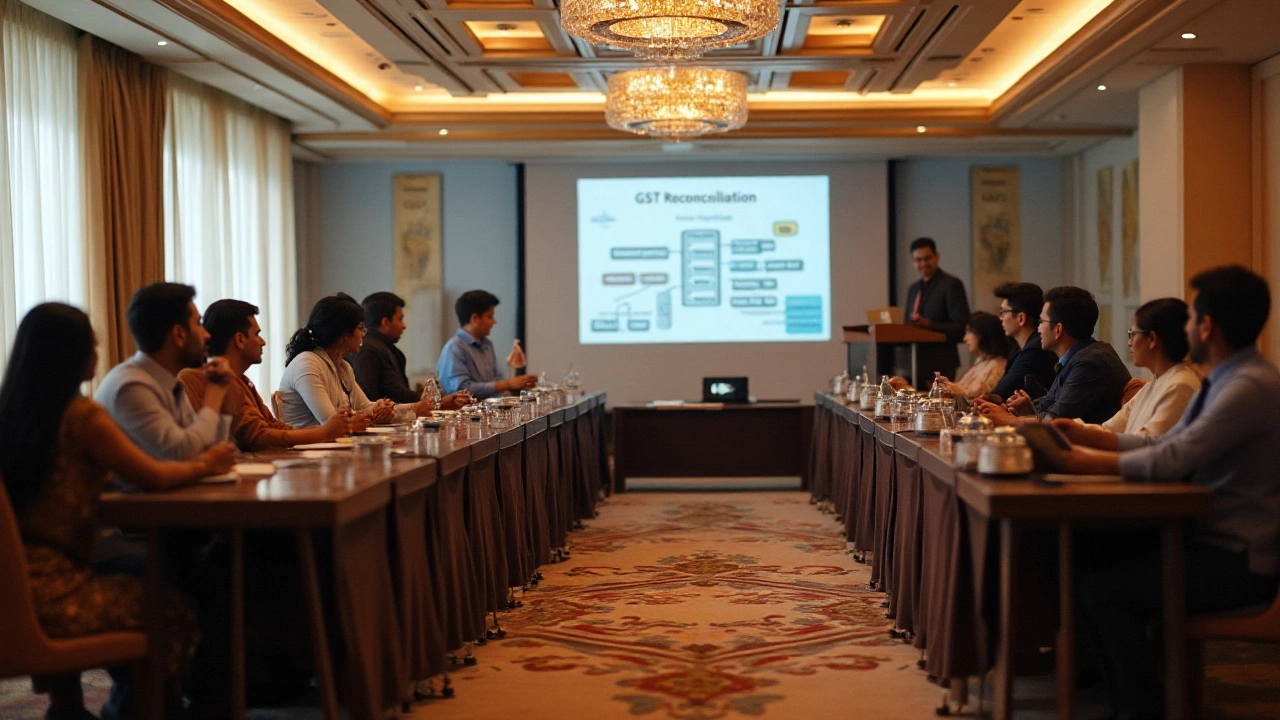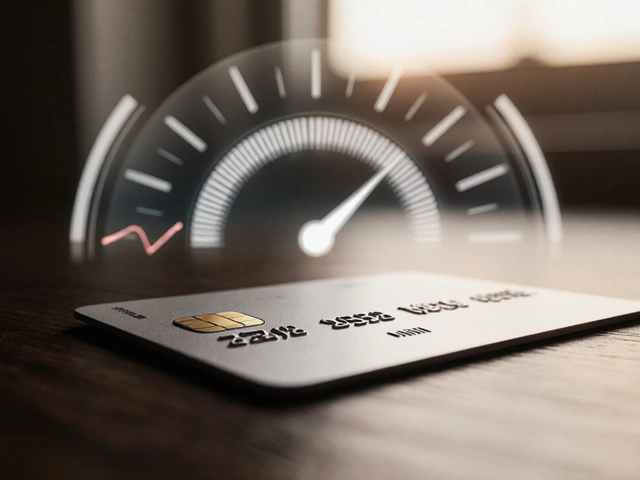
Navigating the landscape of GST reconciliation can feel like a daunting task for many business owners and accountants. With its multi-step process, it's important to know not just what to do, but how to do it efficiently.
This guide seeks to demystify GST reconciliation, providing you with a clear pathway to ensure that your books match your tax filings. Whether you’re a seasoned pro or new to the world of GST, these steps and tips will help you keep your records straight and your stress levels low.
Dive into this detailed breakdown and find out how mastering GST reconciliation can benefit your overall financial health.
- Understanding GST Reconciliation
- Preparing Necessary Documents
- Step-by-Step Reconciliation Process
- Identifying and Resolving Discrepancies
- Tips for Streamlining GST Reconciliation
Understanding GST Reconciliation
Embarking on the journey of GST reconciliation can often leave many feeling anxious, especially those grappling with numbers for the first time. Yet, it's crucial to have a firm grip on this aspect since it plays a significant role in maintaining financial accuracy. Essentially, GST reconciliation involves matching the Input Tax Credit (ITC) claimed by your business with the details filed by your suppliers. The objective is to ensure that all your purchases are accounted for and the tax you claim to have paid aligns with the records in the government's GST Network (GSTN).
Many might think of GST as just another tax measure, but its intricacies provide a transparent system that benefits both the payer and the government. It acts as a mirror reflecting the financial health of your enterprise and the accuracy with which your transactions are recorded. A consistent process of reconciliation aids in identifying discrepancies which, if left unchecked, could result in substantial fines or penalties. This process ensures that businesses only claim what they are eligible for, thus minimizing the risk of legal issues while maximizing potential tax benefits.
Understanding the need for GST reconciliation can also foster better relationships with suppliers. A regular and efficient reconciliation process allows you to quickly identify discrepancies in supplier data, prompting timely communication and resolution. By maintaining this orderliness, the business can also ensure its credibility and reliability, essential facets in any financial interaction. To put it succinctly, GST reconciliation is not merely a formality; it's a vital practice advocating for transparency, precision, and accountability in all business dealings.
Despite the perceived complexity, the reality of reconciling GST is bound within a cycle that, once cracked, becomes an intuitive part of business operations. The Australian Taxation Office has acknowledged the complexity in GST filing, stemming from diverse trading activities and the scale of businesses: "In today's dynamic economic environment, effective reconciliation processes are critical for sustainable business growth." Undertaking these tasks proficiently not only showcases financial acumen but places a business ahead in managing its tax obligations efficiently.
Preparing Necessary Documents
Embarking on the journey of GST reconciliation requires one to begin with the assembling of crucial documents. This step is the backbone of the process, as having accurate paperwork is essential for identifying discrepancies and generating trustworthy reports. First in line are your sales invoices. These serve as the primary evidence of sales transactions where GST is collected. Ensure that these invoices are organized systematically—by date, amount, and GST registered parties involved. This organization will significantly ease the reconciliation process.
Next, focus on your purchase invoices. These documents represent the purchases made by the business where GST is paid. Properly sorted and categorized, they help in claiming input tax credits (ITC). It is crucial that these invoices meet the Australian Taxation Office's (ATO) standards, as they can be subjected to audits. Failure to comply can lead to the denial of credits, resulting in additional liabilities. Notably, experts recommend maintaining digital copies alongside physical ones for added security and easy retrieval.
In addition to sales and purchase invoices, businesses need to keep track of payment receipts. These records ensure that all payments made and received are accounted for and align with recorded invoices. Maintaining an electronic format can provide quicker access and a reliable backup in case a physical document is misplaced. Bank statements also serve as an integral aspect of GST reconciliation preparations. They provide proof of transactions, helping to verify that the figures on invoices match with those entered into your accounting system.
A report from a reputable business publication once stated,
"The meticulous maintenance of documents is not just a good accounting practice but a strategic tool to foster trust and precision in business."It's advice like this that underscores the importance of this preparatory phase. Lastly, remember to review and gather records related to inventory purchases and stock on hand. These documents could highlight missed GST credits or reconcile discrepancies between inventory records and financial statements. By ensuring that each piece of documentation is accurate, you're not only smoothing the process of reconciliation but also laying the foundation for impeccable financial management.

Step-by-Step Reconciliation Process
The process of GST reconciliation is more akin to piecing together a financial puzzle. It involves matching data in your books with your tax reports to ensure everything aligns perfectly. To start off, you need to gather all your GST-related invoices and receipts. These documents form the foundation upon which the entire reconciliation process stands. Make sure your records are organised by date and type to avoid any mix-ups down the line. Once you have your documents in order, it's time to roll up your sleeves and dig in.
The next step is to cross-reference your sales and purchase records against the corresponding entries in your tax return. This involves using your accounting software to compare data side by side. If slight discrepancies pop up, don't panic; they're more common than you think. Approach this step methodically, working through each entry to ensure accuracy. As you work, keep an eye out for common errors such as duplicate entries or wrong tax calculations. These mistakes can throw off your numbers and need to be corrected promptly.
Another vital part of this process is ensuring all input tax credits (ITCs) are claimed correctly. ITCs represent the GST amount paid on purchases that are used to reduce the GST on sales. It's imperative that these credits match up with the expenses outlined in your returns. Double-check to make sure each claimed credit is valid and supported by purchase invoices. Remember, claiming incorrect credits can lead to penalties or audits, so accuracy is key. If anything seems amiss, take the time to track down the discrepancy and resolve it.
Once you're confident your figures align, you can proceed to make any necessary adjustments. Adjustments might include correcting earlier period errors or accommodating now-corrected values in your current return. Document each adjustment with a brief note in your records, explaining why it was necessary. This makes future reconciliations smoother and provides clarity if any questions arise later. Good documentation standards go a long way in keeping the reconciliation process transparent and straightforward.
"In the complex world of GST, meticulous attention to detail is the hallmark of a successful reconciliation," notes tax expert Jessica Malone in her book on financial best practices.Finally, submit your final GST report, ensuring it accurately reflects the reconciled figures. This ensures your business remains compliant with tax regulations and avoids any late fees or potential legal issues. As you refine your GST reconciliation process, remember this is not just about fulfilling legal obligations; it's a practice that fosters better financial stewardship and contributes to your business's long-term success. With each reconciliation, aim to learn from any mistakes and streamline your practices for next time.
Identifying and Resolving Discrepancies
When it comes to managing GST reconciliation, one of the most challenging and yet critical tasks is identifying and resolving discrepancies. These variances between what you've recorded in your accounting systems and what's on the government records can arise for several reasons. Maybe it's human error, such as entry mistakes, or perhaps due to technical issues like incorrect data importation. Regardless of the source, finding these discrepancies is crucial for maintaining the integrity of your financial statements and ensuring compliance with tax obligations.
Start by conducting a detailed review of your sales and purchase records as compared to the submitted GST returns. This means delving into invoices to check numerical accuracy and ensuring that the correct GST rate has been applied. In many cases, the simplest mistakes can lead to significant differences; for example, typos in numbers or incorrect invoice details can cause misalignments. Using accounting software effectively, with real-time data synchronization, can help bridge some gaps before they evolve into larger issues.
Another layer of complexity in the GST filing process is handling transactions that cross over different tax periods. This often happens with advance payments or when rebates and discounts come into play. When dealing with these, it’s crucial to account for them in the period they relate to rather than when the cash changes hands. Failure to do so might not just affect reconciliation; it could potentially open up the business to audits or penalties, which no one wants.
Dealing with Discrepancies
Once discrepancies are identified, the next step is resolution. Adjustments need to be made in the accounting records, and sometimes in the filed GST returns as well. This process can be intricate, and great care must be taken to document every change properly. One effective method is to use a systematic checklist to ensure nothing is overlooked during adjustments. Additionally, it's worth considering consulting a qualified accountant or tax specialist when complex issues arise. As noted tax expert Paul Duncan once said, "The costliest mistake in finance isn't inaccuracy; it's ignoring the need for expertise when it's needed most."
Here is a simple strategy that can help:
- Start with cross-verifying each entry in your accounting software with physical invoices to ensure no data has been missed or entered incorrectly.
- Double-check the GST rate application to confirm it's consistent across transactions.
- Update any records that have been found erroneous, recalculating figures where necessary.
- If amendments are too complex, consider filing a revised GST return to reflect the correct information.
- Maintain a clear, detailed record of all changes made for future reference or in case of audits.
Interestingly, a study conducted in 2023 highlights that businesses that used automated reconciliation tools reported a 40% reduction in discrepancies compared to those relying solely on manual bookkeeping. This further illustrates how integrating technology into financial processes can enhance accuracy and efficiency.
By closely monitoring and adjusting for discrepancies, businesses not only align with regulatory standards but also forge a path of transparency and trust with stakeholders, ensuring a smoother financial operation.

Tips for Streamlining GST Reconciliation
Streamlining your GST reconciliation process can save you both time and reduce the chances of making errors that could incur costly penalties. To make the reconciliation process smoother, start by maintaining a well-organized financial record-keeping system. This involves having a clear structure for both incoming and outgoing invoices. By doing so, when the time comes to reconcile, everything you need is at your fingertips. Technology can be your best friend here. Leveraging software to keep track of invoices can drastically reduce manual errors and improve efficiency.
Another effective strategy involves reconciling regularly rather than waiting until the end of the tax period. By doing it weekly or monthly, depending on your business size and transaction volume, you make the process less overwhelming and can quickly catch discrepancies before they grow into bigger issues. This can significantly lower stress levels and also improves cash flow management, ensuring you don’t run into surprises when tax filing time arrives.
Understanding the common errors in the GST filing process is also crucial. Often, misclassifications or input errors can lead to discrepancies. Train your team to identify these early on and set up a validation step before entering data into your accounting software. Additionally, reviewing tax legislation changes frequently can prevent misfiled returns due to outdated practices. To manage this, designate a member of your finance team to stay updated on rules specific to GST.
"The key to a successful GST reconciliation lies in constant vigilance and adopting a proactive rather than reactive approach.", says Alex Gibson, a reputed financial analyst. "Keeping abreast of legislative changes and advances in software applications makes the difference."
For those who use accounting software, ensure it is updated and capable of accurately tracking GST components across transactions. Consider choosing a system that allows integration with other applications like your point of sale and inventory management systems. This integration minimizes the chances of data mismatch and keeps your records in sync, making reconciliation almost a seamless process.
Lastly, open channels of communication with your suppliers and vendors to ensure that they too are GST compliant. Cross-verifying transaction details with them can help catch discrepancies at the source. Nurturing good relationships here not only helps in the reconciliation process but could also bring long-term business goodwill.
In summary, by keeping organized, leveraging technology, understanding common errors, staying informed on regulations, and maintaining good supplier relationships, you can efficiently manage your GST reconciliation process. These steps not only ensure compliance but also contribute towards the financial health and operational efficiency of your enterprise.








Write a comment